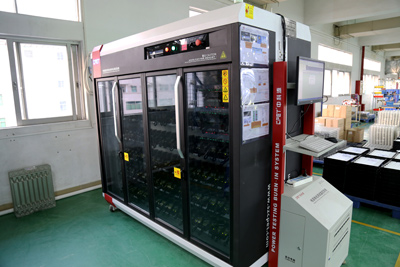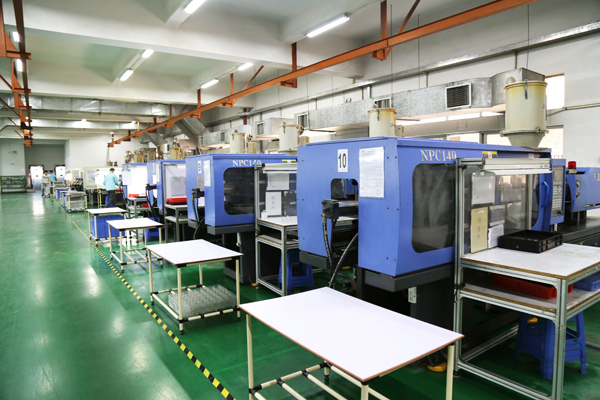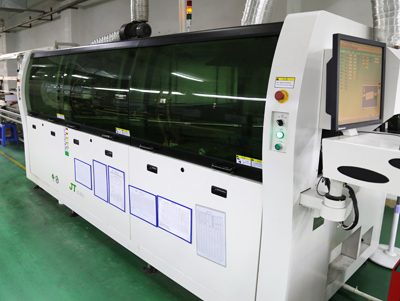SEACOMP was featured in the June 2017 issue of Business in Focus magazine. The article covered our history, company growth, component distribution and manufacturing services. Keep reading for the article:
BRINGING NEW PRODUCTS TO LIFE
Written by Robert Hoshowsky
SEACOMP Displays Inc., headquartered in the seaside resort city of Carlsbad, California, is in the business of innovation. SEACOMP has earned the respect of customers and industry peers worldwide for its professionalism, ingenuity and timely delivery of high-quality electronic components.
SEACOMP has been in business since 1989 and continues to grow to serve its many customers in markets from industrial to consumer products and medical applications. The company is committed to working with clients to create the ideal design, engineering it and carry it through to manufacturing.
SEACOMP’s Owner and Chief Executive Officer Michael Szymanski worked at the business as director of sales for five years prior to purchasing it in 2007. He and his team have been responsible for strategically growing SEACOMP both organically and through a series of highly-successful acquisitions, including purchasing an Asian manufacturing facility which enabled the company to significantly reduce markups and price electronic components more competitively in the marketplace.
“For the first nine years, we grew twenty-four percent year-over-year at compounded annual growth. It was fun to be a part of,” says Szymanski.
SEACOMP has a staff of about forty full-time employees working in day-to-day operations and two hundred to three hundred operators in its manufacturing facility in China, depending on the season and build cycles.
The company started as Displaytech in Hong Kong, supplying LCD modules. In 1997, SEACOMP was established in San Diego as the Displaytech U.S. sales office.
Over the years, new services have been introduced, including custom circuit board assembly, in-house injection molding and tooling, among others. In 2008, the HDP Power division was launched, offering power supplies such as wall adapters and rechargeable batteries. This was soon followed by the formation of the design engineering team in the U.S. to provide both firmware and hardware engineering support.
In 2012, the company reorganized SEACOMP as the parent company to Displaytech and HDP Power. Szymanski also moved to Hong Kong at this time to ensure unified communication throughout the company’s worldwide operations. More management staff then joined the company, and it has expanded its manufacturing with a massive, well-equipped 110,000-square-foot production facility in ChangAn.
Today, SEACOMP is composed of three divisions. These include Displaytech, which makes color touch screen displays and monochrome graphic and alphanumeric LCDs; MH Manufacturing, which offers individual or bundled contract manufacturing; and HDP Power, which makes desktop adapters, wall chargers and embedded power supplies as well as custom power solutions.
“Every potential customer that we interact with is going to use some type of component or service that we offer,” says Vice President of Sales and Marketing Terry Arbaugh. “The display is one of the first items that gets selected in the product development process and we are able to offer displays early on in our engagement with customers, and, from there, support them all the way through the product development process.

Likewise, SEACOMP provides both power supplies and batteries, which come at the tail end of the product development process.
“We have seen both sides. We manufacture components, and we know what’s important to our customers: performance, size, cost, et cetera. Additionally, because we are an engineering company and a full manufacturer of turnkey products like thermostats and remote controls, we have seen and been through all the pitfalls that our customers developing products are going to face. We know what to look for, how to design for manufacturing and how to quickly get product from the start to the finish line.”
For SEACOMP’s clients, one of the company’s many strengths is its manufacturing facility in Asia.
“That’s one of our biggest competitive advantages,” says Arbaugh. “We are an American company operating in China, as opposed to a Chinese company. So we have American management in place both in Hong Kong and at the factory on a day-to-day basis, operating with Western business practices and quality control standards that our customers expect.
The company provides Western quality with the price advantage of offshore manufacturing. From its main California location, it conducts product development engineering and works with customers in other countries, including Germany, where it has an office managing European sales. SEACOMP engineers work with clients in the same language and similar time zone and can move a new product introduction through the phases of engineering into manufacturing very quickly and efficiently, which is a tremendous advantage.

“Like anything else, the technologies that we use are evolving at an extremely rapid pace,” says Szymanski. “And with labor rates increasing frequently in Asia, investing in new machinery to increase efficiency is one of the most important factors for maintaining a competitive advantage in China right now because it is getting increasingly more expensive.”
SEACOMP manufactures components and electronic devices found in many homes and businesses today. In addition, it is licensed by American multinational technology giant, Apple Inc. which is quite exacting when it comes to the accessories its products pair with.
The company is licensed by the MFi Program by Apple. Essentially, the MFi licensing program is a seal of approval from Apple for electronic accessories that connect to iPod, iPhone, and iPad.
The SEACOMP manufacturing division is an authorized MFi Manufacturing Licensee, meaning it can procure MFi components and manufacture MFi accessories as finished goods. The company undertook a unique process to achieve this extremely important certification.
Originally, the manufacturing facility SEACOMP had acquired had a lower-level accessory certification. When the Apple connector changed to the proprietary Lightning Connector in 2012, companies had to recertify. SEACOMP reached out to all its MFi customers for support with the recertification. Many of the customers wrote letters to Apple mentioning that their companies intended to use SEACOMP over the coming six months to design new products made for Apple compatibility. After meeting with Apple, SEACOMP received a new license just forty-eight hours later.
“They [Apple] do not take it lightly on who they approve to buy those products,” states Arbaugh, mentioning SEACOMP is also audited on a regular basis. “We don’t sell to Apple; we buy Apple components to which we add value and resell to customers creating products which work with Apple technology,” says Arbaugh.
Being one of the INC 5000 fastest-growing American private companies four years in a row—2013, 2014, 2015 and 2016—did not happen by chance. This year’s projected growth is between ten percent and twenty percent, the result of factors including sensible planning, intelligent business strategies and ongoing investment in technology.

The company either directly brings or assists in bringing about seventy products to market every year, much higher than average hardware manufacturers, and prides itself on a series of best practices for success. Much of the credit for this success lies with the company’s highly-skilled team of engineers, who know a great deal about component interaction, design and manufacturing.
Szymanski says SEACOMP’s “core purpose as a company is to ‘Help Innovators Deliver Awesome.’ What that means for us is, our business model is designed to be supportive, complementary, or able to take the lead in any area that our customer might need to finish their design and get the product to market. We go from the proverbial bar napkin sketch and do all of the full engineering, hardware, software, mechanical, graphical user interface design and industrial design in some cases. So we can literally do everything, go all the way from concept to building and shipping the product.”
The company works with clients on complete design and manufacturing packages or with clients that only require assistance in one area of product development.
“If you need a full engineering and manufacturing partner, we can do the whole thing for you; and if you just need help in certain areas, you can pick à la carte what you need, and we are here to support you. We exist to help our customers deliver on their company missions, and we are excited to partner with companies that are improving the world we live in.”